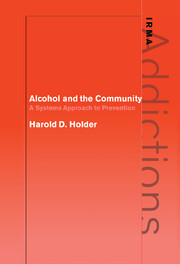Introduction
The use of alcohol can have a wide range of social, economic, and health consequences in a community. Some of these consequences, such as liver cirrhosis or alcohol psychosis and resulting hospitalizations, may result from long-term use of alcohol. Other consequences may result from the heavy use of alcohol on occasions where impairment in judgment, function, or physical skills results in injury or death of the drinker or others, and emergency medical services may be required.
Alcohol increases the risks of all types of injury or violence. For example, the frequency with which drinking and violence towards a spouse co-occur indicates that alcohol increases the risk of spouse abuse. Not all cases of spouse abuse are caused by drinking; however, the acute effects of alcohol may increase violent or victim behavior of either spouse, or violence towards a spouse may be precipitated by family disruption associated with long-term or heavy dependent drinking. Examples of accidents made more likely by alcohol impairment include motor vehicle crashes and drownings.
The Social, Economic, and Health Consequences Subsystem has three functions in the community:
(1) Definition and identification of alcohol-involved problems.
(2) Remedial or preventive response to these problems.
(3) Direction of public attention to these problems.
It is not always obvious what constitutes an alcohol-involved problem for the community. The seemingly trivial case of a hangover from drinking illustrates the subtlety of some alcohol-involved problems. Most experienced drinkers have had hangovers, and hangovers have been the subject of many comedy routines; this drinking-related outcome is not generally considered a community problem.
